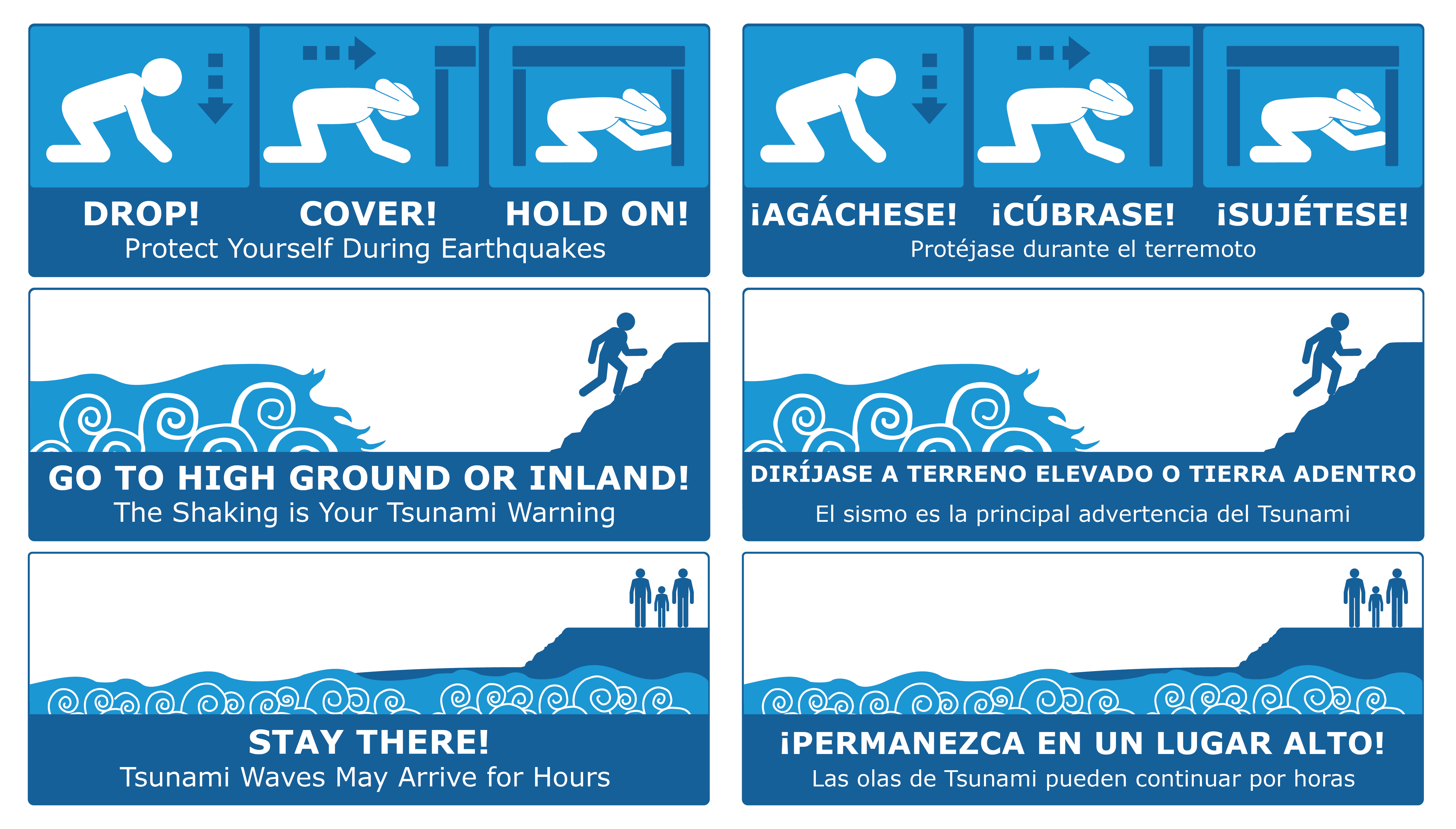Exploring the Oregon coast this spring break? Take time to plan for an earthquake and tsunami before your adventure.
March marks the anniversaries of two significant earthquake and tsunami disasters that impacted the Oregon coast: the March 11, 2011, Tohoku event in Japan and the March 27, 1964, Alaska megathrust earthquake and tsunami. Both events produced ‘distant’ tsunami that were triggered thousands of miles away, but eventually reached the Oregon coast ~9.5 and 4 hours after the earthquakes, respectively. Because those earthquakes occurred far from Oregon, Oregonians would not have felt the ground shaking prior to the arrival of their associated tsunami.

Of greater concern on the Oregon and Washington coasts is a locally generated megathrust earthquake and tsunami triggered by movement along the Cascadia Subduction Zone, located ~50 miles offshore. In such an event, residents and visitors will feel strong ground shaking, potentially lasting several minutes, prior to the arrival of a tsunami that would reach the Oregon coast between 10-30 minutes later. “A Cascadia subduction zone earthquake could happen anytime – even during vacations,” says Oregon State Geologist Ruarri Day-Stirrat. “Plan now to be ready no matter where you are.” DOGAMI scientist Jonathan Allan adds: “The recent Tohoku Japan earthquake and tsunami showed us how destructive a locally generated subduction zone earthquake and tsunami could be, and that Oregonians need to be prepared for its eventuality.”
Residents and visitors can prepare for tsunami by becoming familiar with Oregon’s tsunami evacuation maps, developed by DOGAMI. The maps are available at the Oregon Tsunami Clearinghouse (https://www.oregontsunami.org) and viewable online using the Nanoos viewer (https://nvs.nanoos.org/TsunamiEvac). The maps provide information about potential tsunami inundation zones for both distant and local tsunamis and information about how fast people need to travel to reach high ground and “beat the wave.”
The Oregon Department of Emergency Management encourages individuals, families, and communities to take steps to “Be 2 Weeks Ready” for any emergency or disaster, including earthquakes and tsunami. Being 2 Weeks Ready means having an emergency plan and enough supplies for you and everyone in your household, including pets, to survive for at least two weeks after a disaster. It also means being informed: Review available information about earthquakes and tsunami from state and local sources, sign up to receive local emergency alerts at https://oralert.gov/, and make sure Wireless Emergency Alerts (WEA) are activated on your mobile phone.
Additional resources to help Oregonians learn about earthquakes and associated hazards:
Oregon Tsunami Clearinghouse: Access to a wide variety of tsunami information, including evacuation maps, maritime brochures, educational materials, and planning guidance. https://www.oregon.gov/dogami/tsuclearinghouse/Pages/default.aspx
NANOOS Tsunami Evacuation Zones: Tsunami evacuation zone maps along the Oregon and Washington coasts. https://nvs.nanoos.org/TsunamiEvac
Oregon Department of Emergency Management: Learn more about what to do in event of an earthquake, and find advice and guides on how individuals, communities, and businesses can prepare. https://www.oregon.gov/oem/hazardsprep/pages/earthquakes.aspx
ShakeAlert: An early-alert system that can send notifications to mobile devices and emergency alert systems in the event of a potentially damaging earthquake. https://www.shakealert.org/

